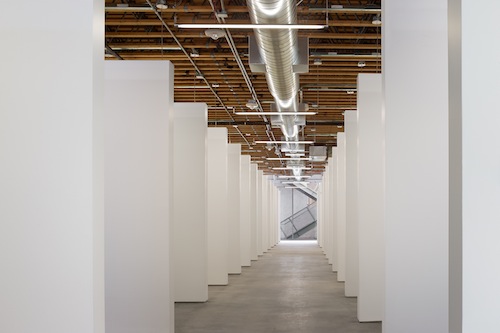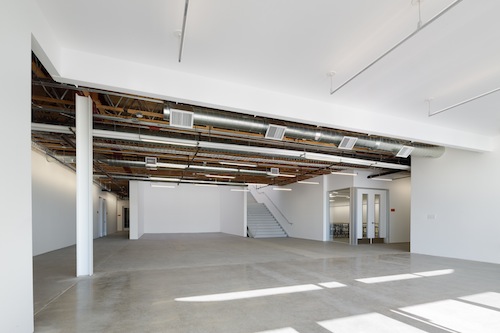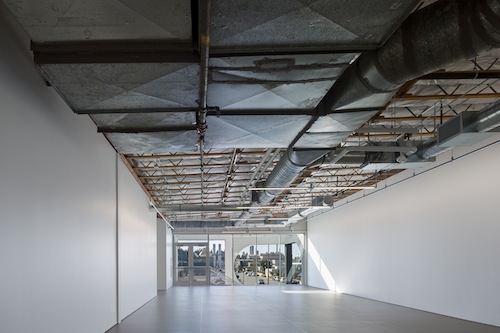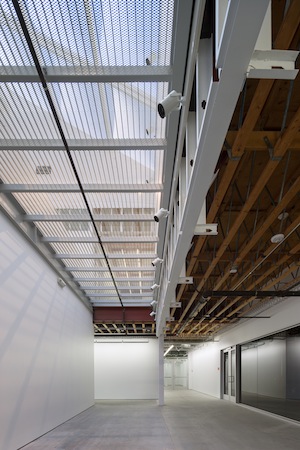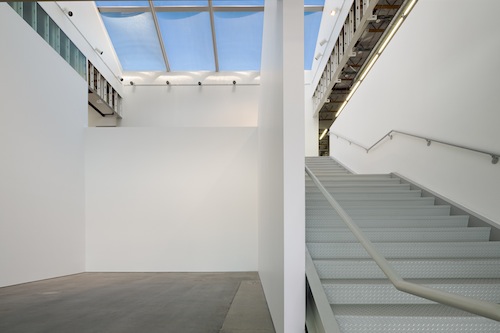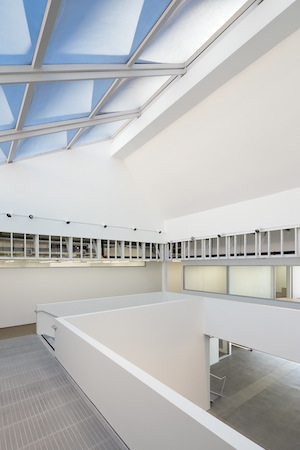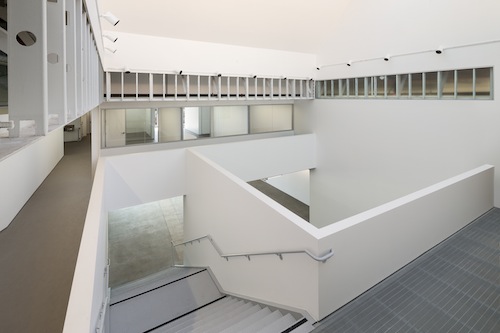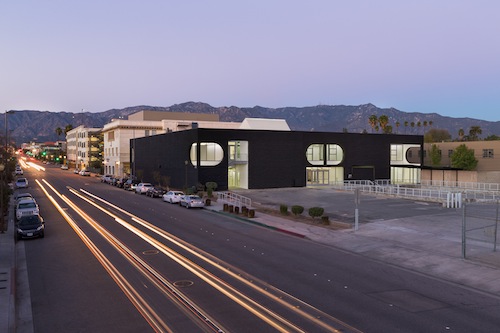This is the first in a two-part series tracking the impact of Art Center’s newest academic facility on the two departments it houses: Fine Art and Illustration.
A man bursts through the gleaming glass doors at 870 South Raymond Avenue in Pasadena looking confused, harried and hurried. Fine Art faculty member (and former interim department Chair) Tom Knechtel, pauses mid-sentence and offers an answer before the man can blurt out his question. “You must be looking for the post office,” says Knechtel, who spearheaded the department’s participation in the renovation of this former postal sorting facility before newly installed Chair Vanalyne Green took the helm. “This is Art Center.”
That was far from the first (or last) time Knechtel will explain the building’s spectacular transformation from drab industrial edifice to the striking state-of-the-art headquarters for the College’s Fine Art and Illustration departments. This newest addition to Art Center’s South Campus constellation of facilities opened earlier this month after a six-month renovation undertaken by College leadership and overseen by architect Darin Johnstone.
Knechtel is particularly well equipped for today’s role as tour guide and explainer in chief, given his front-and-center role in collaborating with Illustration leadership to create a shared facility that vastly expands each department’s resources and creative capacities. “We’ve gone from two classrooms to five,” marvels Knechtel. “We now have an arts and media room, a room for our ArtMatters concentration, our first film and video room, sound editing room and sculpture yard, as well as boosting the number of student studios from 18 to 47.”

Fine Art student Elizabeth Freeman gets organized in her new studio. (Photo by Elon Schoenholz for Art Center)
This proliferation of studios will have the most immediate and beneficial impact on current Fine Art students, who are now empowered to work on projects, large and small, in a semi-private area all their own. Practically speaking, this means that they’ll now have a place to conceive, create and store their artwork when they’re not in class, instead of lugging works from home to campus for in-class critiques.
Judging by the appearance of AeroBeds and futons competing for space among students’ paint palettes and canvases inside many of the freshly-painted rectangular studios, it’s clear that students are planning to log many hours in their creative capsules. “Art Center has traditionally been a commuter culture,” explains Knechtel. “We wanted these studios to provide incentive for students to hang out and create a community. Developing strong peer relations skills will be essential to building the structure of their professional lives as working artists when they leave the College.”
For students interested in creating large-scale installations, the outdoor sculpture yard promises to become a game-changing resource. Previously, the department’s sculptors could be found building, refining and assembling their work in any available space, from their living rooms to parking lots.
“Shared space” reads the sign at the top of the industrial stairway, leading from the sky-lit gallery facing the building’s entrance to its second floor, which houses the Illustration Department’s base of operations as well as faculty meeting rooms, studios and galleries available to students in both disciplines. Though these drawing-intensive disciplines might seem to be natural collaborators on paper, so to speak, the two rarely intersected until undertaking this renovation and relocation. “This room is really the result of working collaboratively,” says Knechtel, as he enters the second floor’s large, open exhibition space, featuring a wall of windows and acres of wall space awaiting large-scale installations. “We could have cut it in half and divided it evenly. But we decided to pool the space and make it accessible to students. In the end, we all came out ahead.”
Ultimately, this new space provides each department with a bigger canvas. For Fine Art, that translates into greater latitude to respond nimbly to a rapidly shifting art world landscape with classes that reflect those changes. “Part of our giddiness is that this has all gone so well,” concludes Knechtel. “We have much greater capacity and freedom within our program now that we have the room to expand what the program can do and grow into it.”

